House plants not only add beauty and color to any indoor space but also serve a health purpose in that they help clean & filter the air inside. So, it’s a shame when you want to have indoor plants but either the expense or work needed to maintain them deter you for taking that leap and starting your own indoor plant collection.
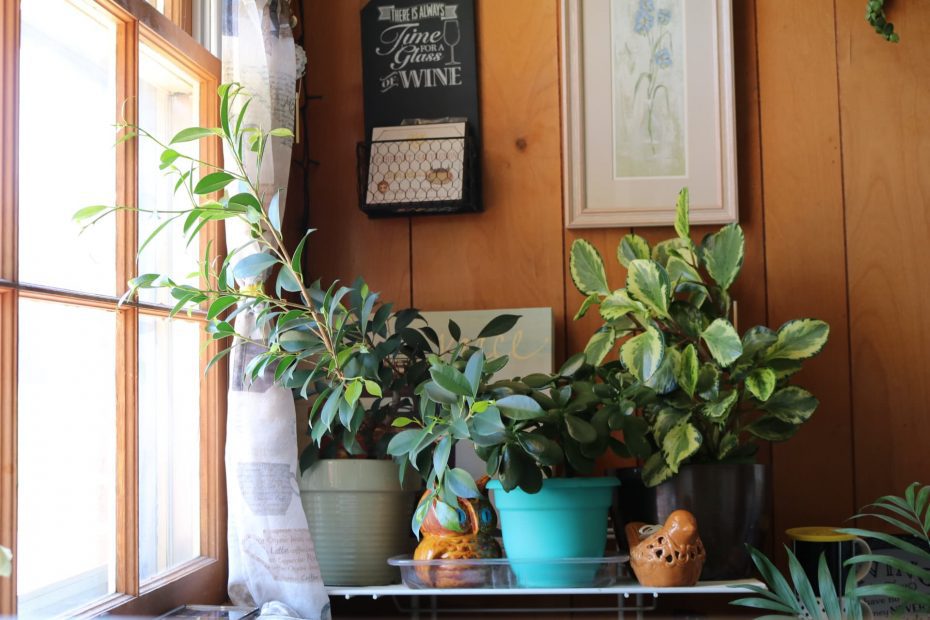
But what if I told you indoor plants are easy to look after & keep alive? More importantly, what if I showed and proved to you that if you looked in the right places, made the right selection of plant and followed the correct method of propagation, you could in fact start and expand your indoor plant collection for free, giving you that indoor beauty & fresh air you always dreamed of?
Read on to find out about a few very inexpensive & free ways in which I obtained some of my most prized indoor plants. The method of propagation in almost all these cases, barring one, was propagation by rooting in water.
Stems Damaged In Thunderstorm
Citronella (Pelargonium Citrosum)
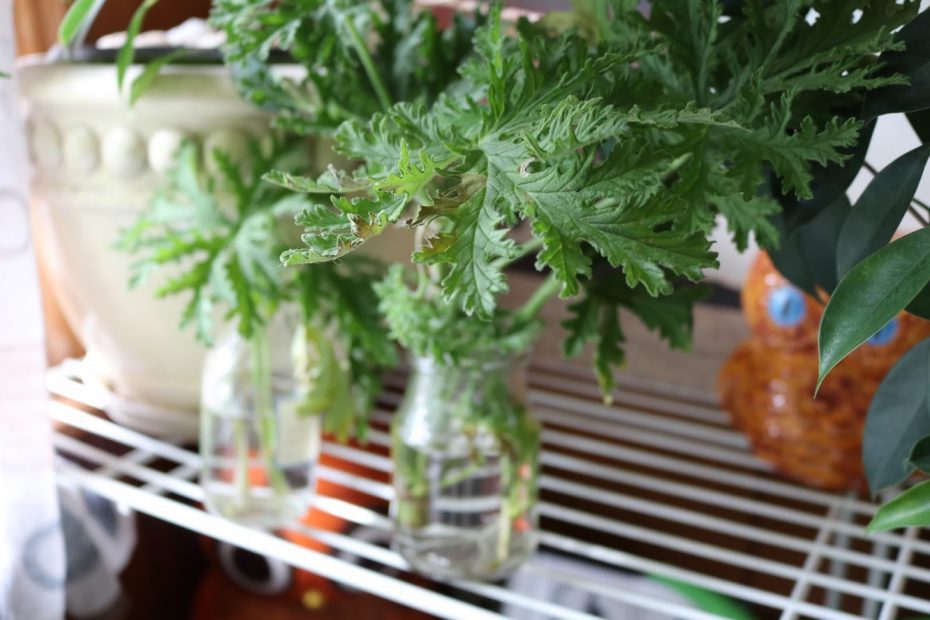
The Citronella plant known by a variety of names including mosquito plant geranium, citrosa geranium & pelargonium citrosum is a well-loved plant that produces lavender blooms in summer and is essentially prized for its citrusy scent, which is thought to have mosquito-repelling properties. This should not be confused with the Citronella Geranium plant that produces citronella oil – the active ingredient in citronella candles.
Truth be told, I bought my original Citronella plant as part of a 3/$10 deal on summer herbs at my local Lowes. It was a cute little size in a 3” pot with large parsley shaped leaves. Since I bought it for its mosquito repelling properties, I placed it as a centerpiece on a bistro table outdoors on my shaded patio. Sadly, 2 weeks later a big and unexpected summer thunderstorm hit and knocked the plant over. The tallest part of the stem with a few leaves broke off in the tumble. Some secondary stems also came apart from the main plant. I didn’t see anyway I could save these since they were just broken pieces of stems without nodes for propagating opportunities.
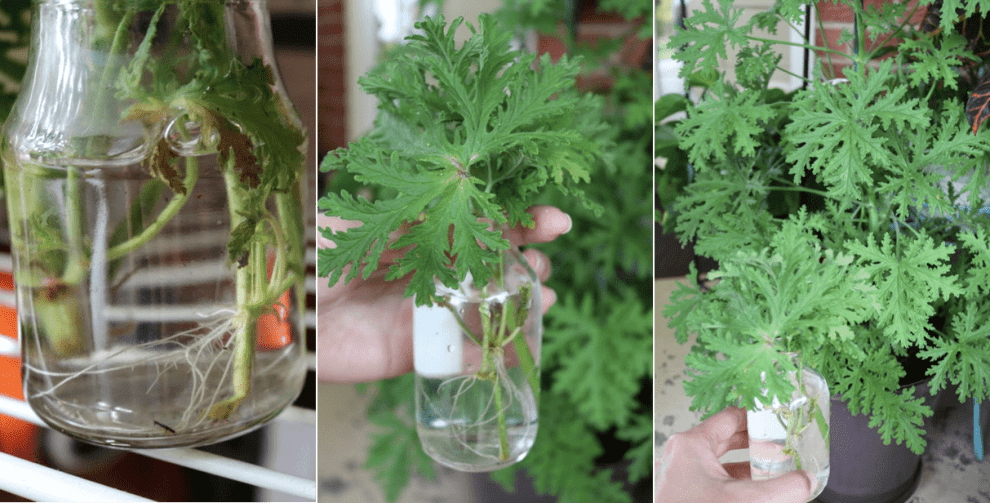
Just for the sake of the scent though I put them in a small glass bottle with water to keep them fresh and brought this indoors. After a week or so, the arrangement still looked fresh and by the third week, I started to notice small roots emerge! Such a wonderful, unexpected surprise. By week 4, I had replanted this with the original plant in the same pot but you could easily replant in a new pot & place in a new location too, as a second plant!
In summer Citronella makes an ideal plant both indoors in containers or outdoors in flower beds but need to be dug up and taken inside before the first frost.They need an area with well-drained soil and full sun and are hardy in United States Department of Agriculture (USDA) plant hardiness zones 9 through 11.
Floral Centerpiece Decor – Cutting
Purple heart (Tradescantia Pallida ‘Purpurea’)
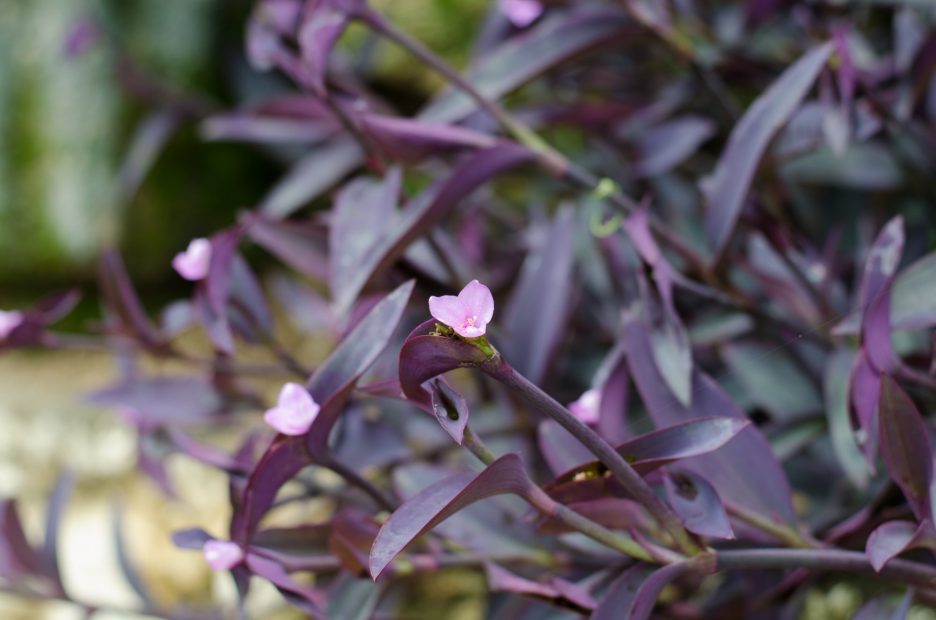
3 years ago, I was attending a training conferences & at the end of the conference, we played a Q&A game. The prizes were many but one of them included the winner taking home the centerpiece table decoration– a beautiful floral assortment bouquet. A member from my table won one of the rounds and since coming up with the answer was a group activity, she offered to split the prize as well. I came home with a cutting from a robust matured Purple Heart plant.
This evergreen perennial has dark purple foliage that can grow about a foot tall but spreads easily and can grow up to 24 inches wide, so it’s the perfect plant to add a beautiful pop of color to your yard. It’s also an excellent container plant, growing well in hanging baskets on your patio or inside as a houseplant.
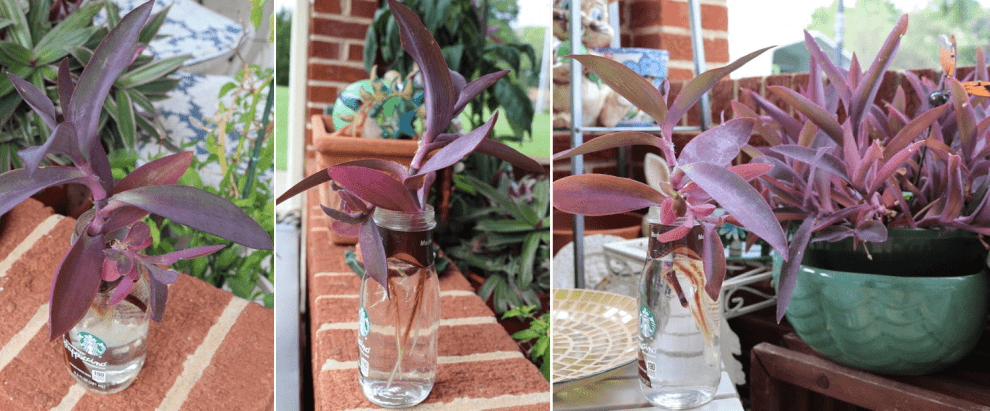
I debated rooting my cutting in water or directly in soil. My mother-in-law said the second was hassle free but then again, she admitted she had never done this specifically with a purple heart. So, I went with what the winner & others did with their cuttings – rooted in in water and patiently waited for roots to form. They did and today I have a container full of healthy Purple Hearts. How did I do this? Once rooted, I planted my original cutting in soil, where I let it grow, undisturbed through one whole season. It grew strong but long and leggy. I couldn’t bear the look of it so took a big risk cut off the entire length of the stem down to about a few inches and then redivided this stem into smaller sections, repeated the successful step of rooting in water and then planted these smaller new cuttings spaced out in the container, giving it a wholesome, fuller look as the plants began to grow out through summer.
Not forgetting the person who was generous enough to share her purple heart with me, I recently gifted her a cutting from my established plant since hers sadly did not make it. And so, the circle of kindness comes full circle and it didn’t cost a thing!
On Clearance At Nursery
Pothos (Epipremnum Aureumis)
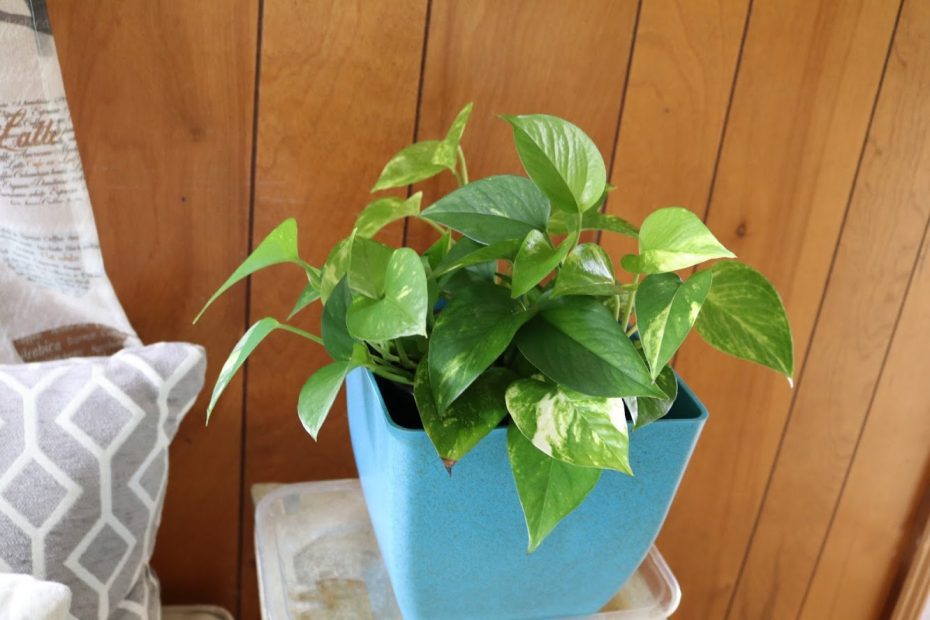
Anyone who owns a Pothos (and I assume there are quite a few of you, given this is a common, easily available favorite) knows it’s a hassle free, low maintenance but fast growing plant. You can propagate several new plants from just a few cuttings from the original. I started off with a $3 Pothos plant purchased at Walmart 5 years ago, that has now multiplied from cuttings into several new pots. Last I counted I had 4 full bursting containers of Pothos – 2 placed outdoors, 2 indoors. I also have cuttings rooted in water in 2 glass bottles decorating my bathroom that have got many compliments. Maybe you’d like trying this too! All this is in addition to that original mother plant. I grow all of my Pothos plants in containers which are brought indoors in winter.
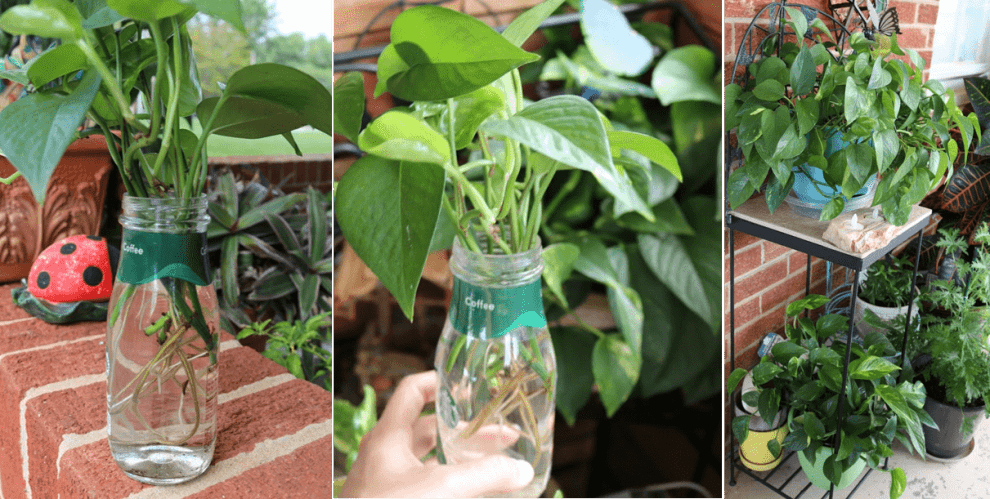
There are a variety of pothos cultivars that offer diverse colors and patterns on heart-shaped leaves. Although they do not have a bloom they rapidly transform in shape, starting off as a small cluster of leaves and then bursting into dazzlingly long vines of verdant green that are hardy and nearly indestructible making them suitable for a variety of home décor & design ideas.
Neighbor’s Yard Sale
Spider Plant (Chlorophytum)
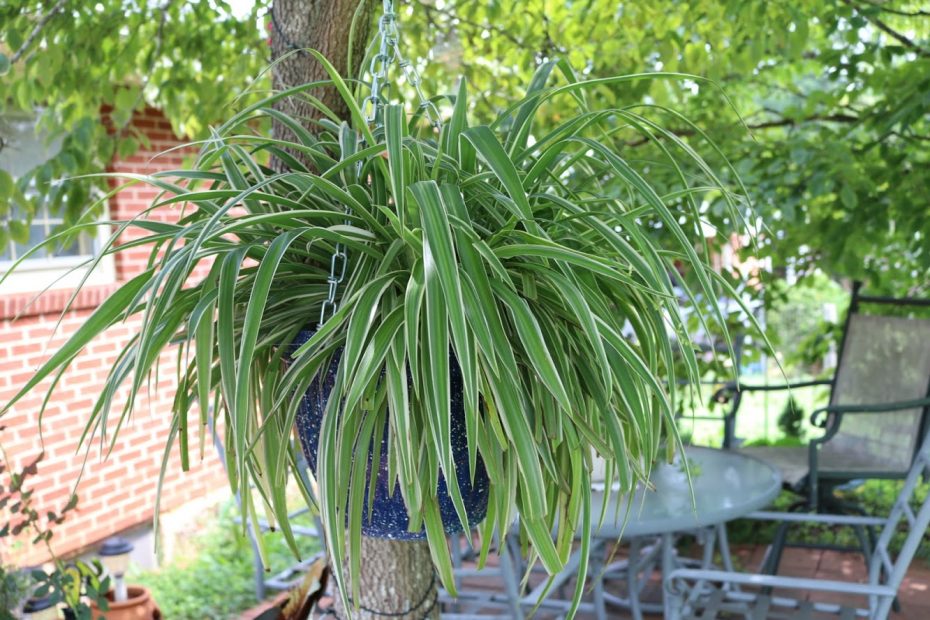
This is by far one of the favorites from my collection, not only because of its beauty and limited seasonal availability but because of the sentiment surrounding the circumstances by which it found its way to me. An elderly couple in my neighborhood was having a yard sale. When we got to the house, we discovered the couple was actually selling their house to move into a smaller apartment by the end of the month. I looked around at the beautifully landscaped yard and spic and span house. I hoped that the couple didn’t have to move, having spent these many years caring for this home. After making a few purchases, the old lady told me the apartment location they were moving into did not allow plants & would I be interested in taking and looking after her pair of indoor spider plants, each in an almost 16 inch/ 10 gallon set of flower pots. This was an unexpected request and I didn’t know what to do with them, but she spoke so fondly of them, I didn’t have the heart to say no. So, I hauled them away, plants, planters, plant stands, caring instructions (I made as much metal notes as possible) and all and it was the best decision ever.
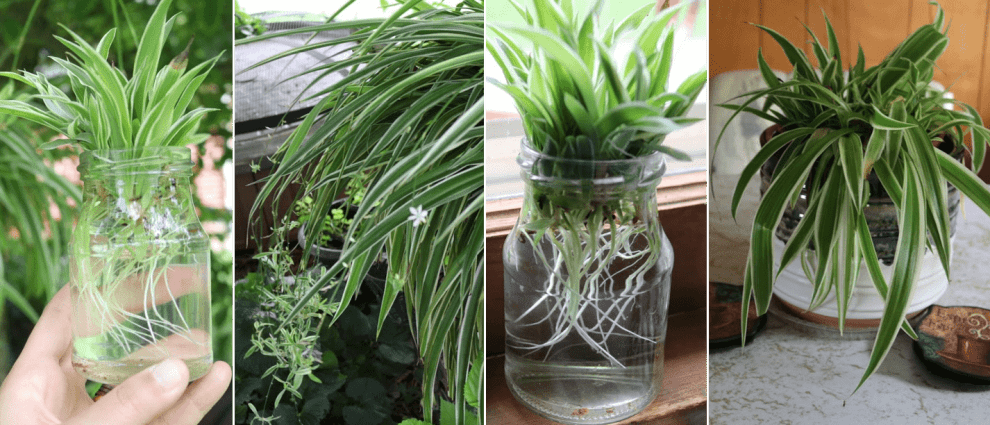
Spider plants can tolerate a wide range of conditions, but they prefer moderate to bright indirect light, with temperatures above 50oF and moderate humidity. You should water them liberally through the summer and mist them occasionally. During winter, cut watering back. Established, container & root bound, spider plants produce baby spider plantlets throughout summer that root easily & quickly in water when detached from the mother plant.
I have propagated several pots of spider plants (I’ve noticed they do better in outdoor hanging baskets in shade) and given them away as gifts to family, friends, colleagues and school teachers as end of year appreciation gifts. I am also a Catechist at my 4th Grade Sunday School at church. Every summer I distribute these baby spider plantlets among my students and help them to root, plant and take home as part of a nurturing activity to teach them human beings are responsible for nature and caring for our Earth. The kids have fun and the lesson is well received. Last year I added a variegated version of the spider plant to my collection and the 2 fit together perfectly.
My Local Gym
Striped Wondering Jew (T. Zebrina)
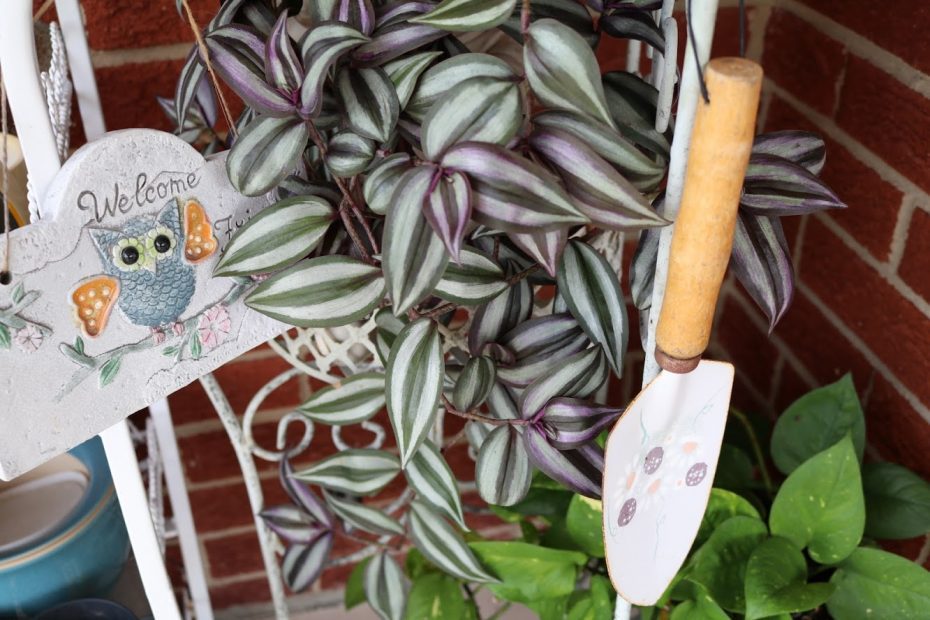
The term ‘Wandering Jew’ is used for several different plant species within the Tradescantia genus which includes at least 75 different herbaceous perennial species, including the spider wort & Purple Heart plant I mentioned earlier in this blog post.
The Striped Wondering Jew is native to Mexico and gets its name from its zebra-like leaves. Its leaves are paired, creamy white in the middle of each half, and silvery green on the edges. The leaves develop a purple patch on the upper surface and underneath and are asymmetrical at the base. The plant has a trailing habit and looks best grown in hanging baskets, window boxes, containers placed on high shelves.
These plants are not easy to come by. After looking around for a while, I was forced to look to eBay and ordered about 5 cuttings online. The cuttings arrived a few days later and while they were healthy when I first got them, they didn’t root vey well. Having had success with the root-in-water method, I thought this would work for this plant too. But the stalk is so terribly tender it started to rot.
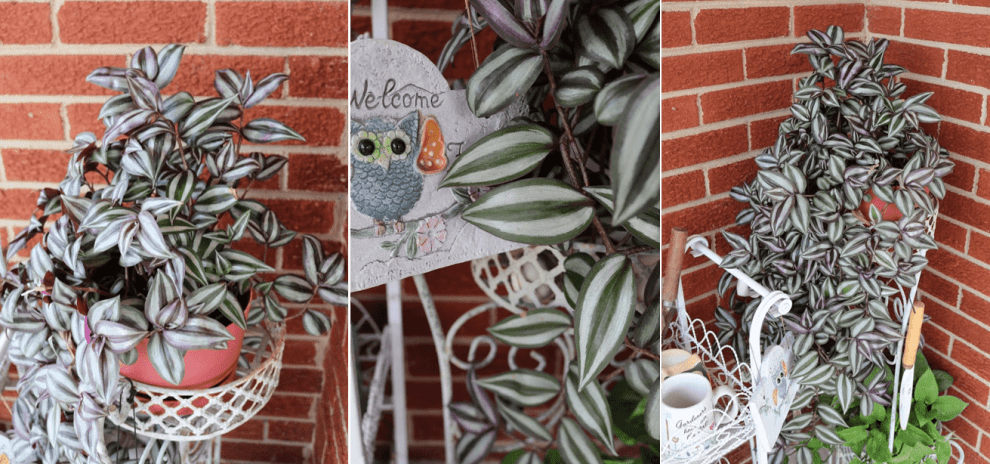
I quicky removed them from water and discovered when I researched online that a Wandering Jew clipping root better in soil. I followed instruction on how to do this and while I had lost half the cuttings from water rot, the 2 that survived seemed to do well in the soil filled starter pots. After a week, I began to see new growth and the leaves took on a healthy look with the required glittery surface. Success!
Not long after, by a stroke of luck, I noticed my local gym had acquired a full basket of trailing Wandering Jew of their own, proudly displayed on the front-customer desk. I shamelessly asked if I could have a clipping or 2 and the staff member on duty said ‘sure, help yourself!’…. music to my ears. Today I too have a pretty red planter bursting with trailing wandering Jew which I proudly display at the entrance of my patio.
Broken stems found in a Grocery Cart
Speedy Jenny OR Baby Bunny Bellies (Tradescantia Chrysophylla)
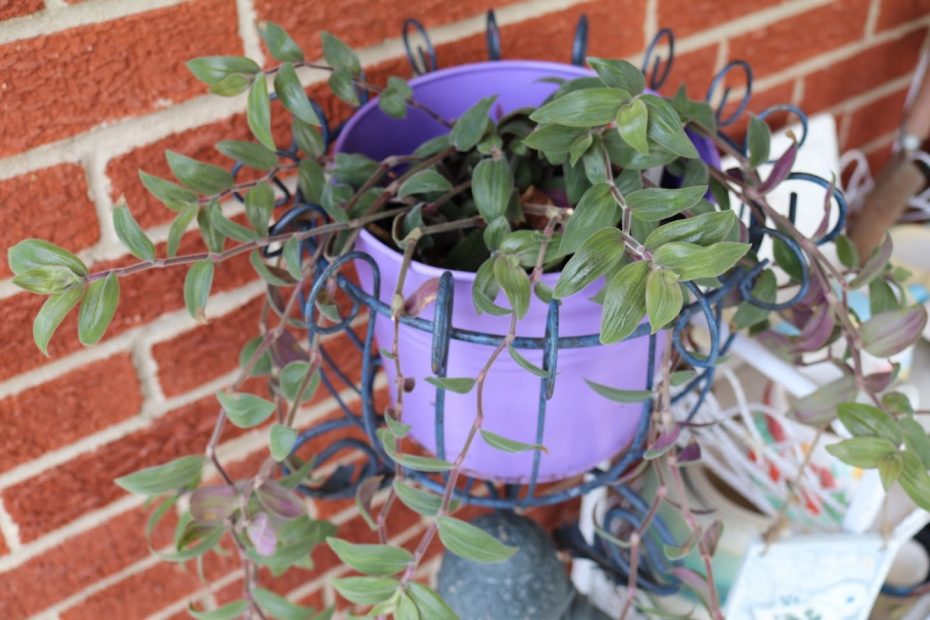
I must warn you that this is a seasonally grown plant and found around Easter time (March-April) and not very easily available. Like the striped Wandering Jew, this belongs to the Tradescantia family. It looks a lot like the Wandering Jew with smaller leaves. Where the defining factor of the Wandering Jew is the shiny glittering look of the leaves, what defines the bunny bellies plant is the soft fuzzy surface of its foliage that feels like a rabbit’s belly!
This plant was my most recent conquest and happened literally by accident because I found a couple of broken stalks left behind in a shopping cart, I picked up on one of my grocery runs. I knew I recognized the plant and looked around the garden section for a basket I could buy because here was the evidence it does exist! But I sadly couldn’t find any left. They were all sold out even before they got there. The tragedy!
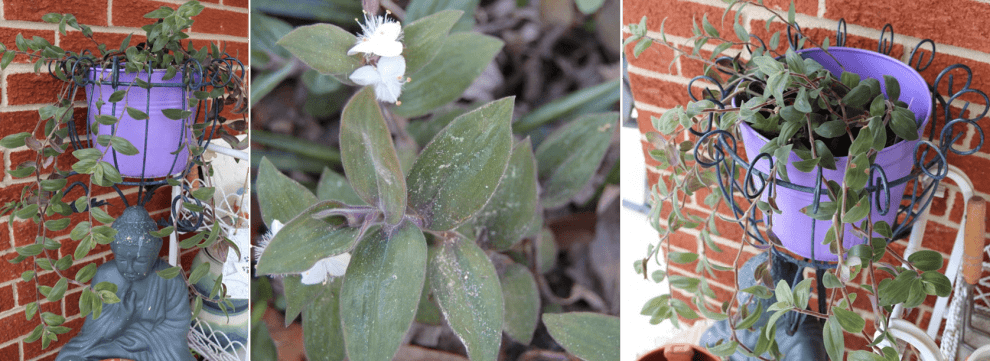
Luckily the broken off stalk was quite long. So, like I did for my Purple Heart stem, I was able to divide it into multiple smaller cuttings. I repeated the same propagation process by rooting in soil that I had followed for my striped Wandering Jew and it seemed to work even better for this plant since the stem was not too tender & I could really stick it into the soil. I noticed new growth in a couple of days. Once established, I quickly placed it outdoors with better access to sunlight than my sunny kitchen window and it really took off. Each time the stem got too leggy I cut it back and re-rooted these clippings in soil so that a few months later, I now have quite a full trailing basket of little bunny bellies. A true Easter Miracle that taught me that nature is beautiful and resilient if looked after in the right way with love and care!
Ending Thoughts

So, there you have it –6 different ways you could obtain indoor plants & grow and expand your houseplant collection inexpensively, virtually free of cost! Exchanging cuttings with friends, and finding plants in natures are another inexpensive & smart ways to build your collection. But irrespective of the cost, Indoor houseplants are easy to care for and I hope this will encourage you to take the dive and start your own collection soon! If you have other ideas or suggestions on how to inexpensively obtain house plants, please comment on this post, I’d love to hear them.

